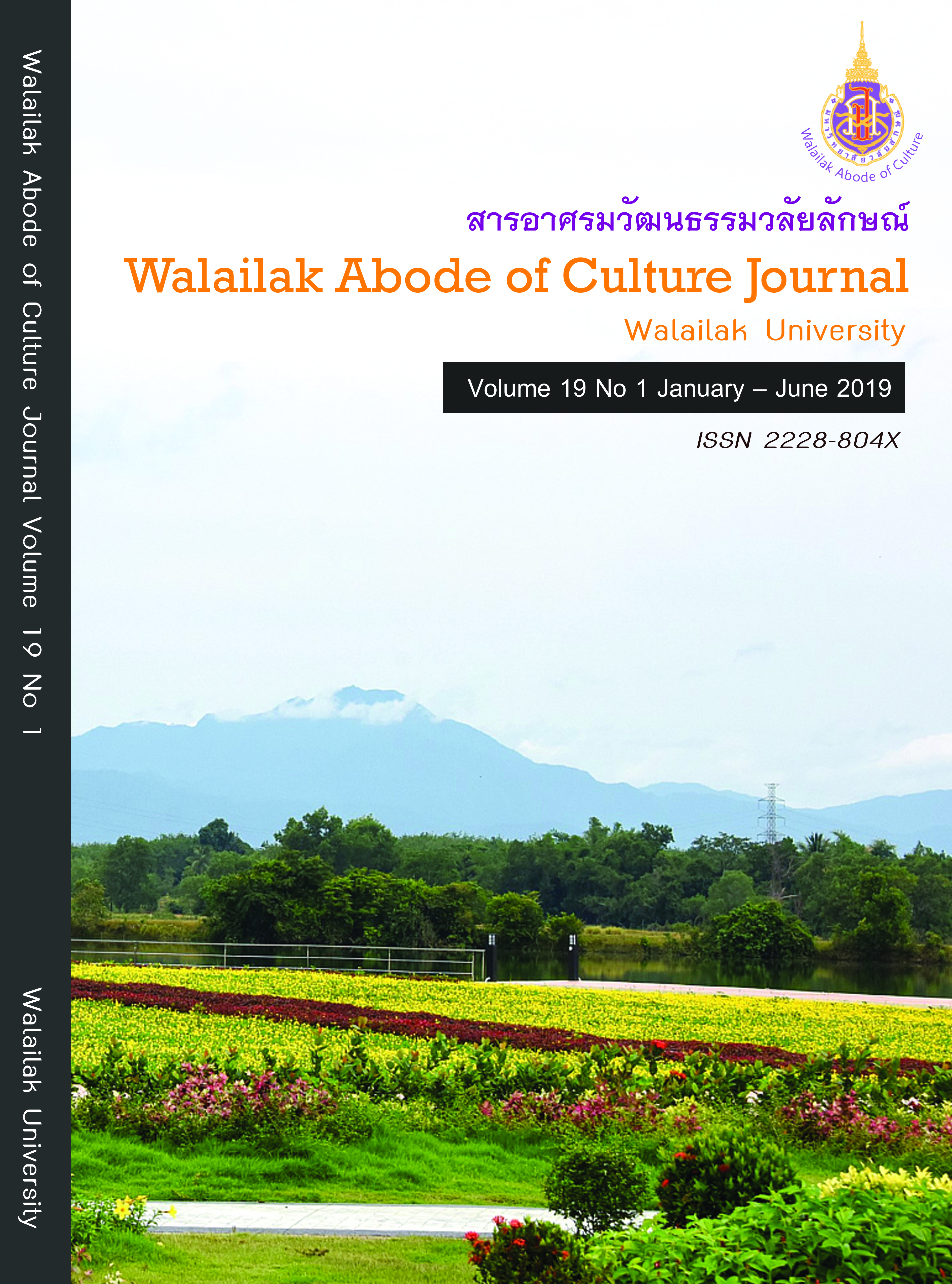From the song “Tae Korn” to the literature “A story from Grandpa” Literacy techniques with Story Telling about Southern way
Main Article Content
Abstract
This research paper aims to present literary arts in a song “Tae Korn” (Beforetime) and literature “Rueng Chak Kun Pu” (A story from Grandpa), and how they portray the society. The analysis of each element of literature techniques, the following common characteristics are found. 1) the authors create a work of emotional trauma from the pride of his birthplace in the southern part of Thailand. 2) The authors use “language” as a tool to tell a story of the south from real experiences. 3) The authors use storytelling techniques of narrative method. In terms of local identity as a multicultural society, the works expose the following details. 1) The authors present southern unique features through their aptitude writing as songs for life and youth literatures. 2) The authors have different ways in projecting their creativity. That is, while Udorn Bawornsuwan composes the work according to the youth literature writing norms, Supakorn Wongmek composes the song by conjoining folk performance “Manohra” and the rhythms of songs for life. Regarding the reflections of southern style, both display the content with local handicrafts and local traditions. However, the observed differences include the mention of local foods and local plants in literature “Rueng Chak Kun Pu” (A story from Grandpa), and the social change of southern community reflected in the song “Tae Korn” (Beforetime). All in all, the creation of literature with its literary power contributing to learning and memorizing is meant to serve as a medium to inculcate the young with love and pride of their motherland.
Article Details
© 2018 by Asian Journal of Arts and Culture, Walailak University. All rights reserved.
References
Anumarnratchathon, L. (2003). Karn suek sa wannakadee ngae wannasil[A study of Thai literature in term of Arts]. Bangkok, Thailand: Siam.
Bawornsuwan, U. (1978). Rueng Chak Kun Pu [A story from granpa]. Bangkok: Children Club.
Nuthong, U. (1999). Nang Ta Lung [Shadow Puppets]. In Saranukrom Wattanatham Thai Pak Tai [Thai culture encyclopedia, Southern].(No 17, pp. 8306-8322). Bangkok, Thailand: Siam Commercial Bank.
Paduungsunthararak, W. (2011). Aksorn Thai lae Aksorn Kom [Thai alphabet and Kom alphabet]. Bangkok, Thailand: Ramkamheng Publishing.
Paruehcakul, W. (2007). Attaluck puen tin nai bunterng kadee park tai [Local identities in southern fictions]. (Ph.D. Thesis, Chulalongkorn University, Thailand).
Petchkeaw, C. (1999). Karn kien cherng sang san [Creative Writing]. Suratthani, Thailand: Suratthani College.
Pinthong, T. (2011). Wannakadee kab sangkom Thai [Literatures and Thai Society]. Bangkok, Thailand: Ramkamheng Publishing.
Pisutrattananon, M. (1999). Krok Sri. [Colored Mortar]. In Saranukrom Wattanatham Thai Pak Tai [Thai culture encyclopedia, Southern]. (No 2, pp. 914-916). Bangkok, Thailand: Siam Commercial bank.
Promkeaw, P. (1999). Mah Pachana Tak Num. [Doggy: Water Container]. In Saranukrom Wattanatham Thai Pak Tai [Thai culture encyclopedia, Southern]. (No17, pp. 8387-8389). Bangkok,Thailand: Siam Commercial Bank.
Ruengnarong, P. (1998). Wannakam Pak Tai [Southern literatures]. Bangkok, Thailand: Ramkamheng Publishing.
Satchaphan, R. (2001). Sart lae sil heng wannakadee [Arts and Science of literature]. Bangkok, Thailand: Prapansarn Publishing.
Satchaphan, R. (2010). Kam ru tua pai thang pa sa Thai ton 3 Wannakadee Thai [General knowledge of Thai language section 3, Thai Literature]. Bangkok, Thailand: Ramkamheng Publishing.
Wannakadee Thai. (2018). Wannakadee Thai [Thai literatures]. Retrieved from https://wannakadeethai. blogspot.com/2013/09/ blog-post_9934.html


